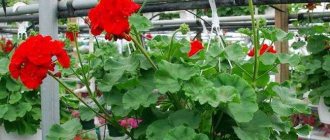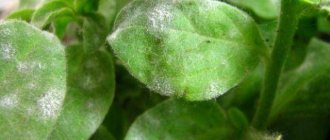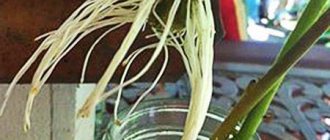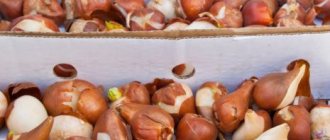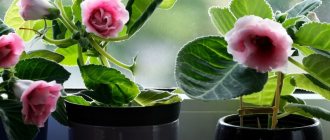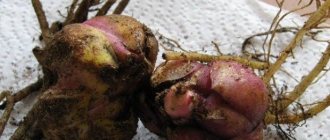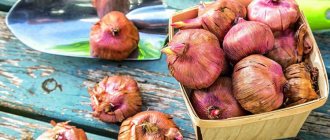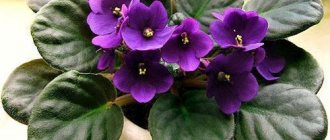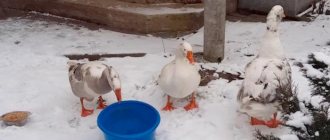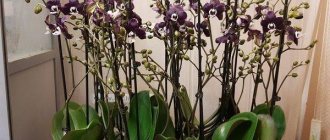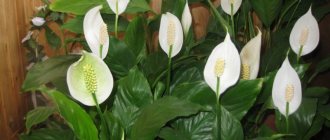Advantages of growing from cuttings
Cuttings are a method of vegetative propagation of petunia, in which a cutting is separated from the mother bushes and rooted in water or soil. The advantage of this simple method lies in the complete preservation of the properties of an adult plant.
In addition to cuttings, petunias are propagated by seeds. This method is not very effective due to the inability to predict the landing result in advance. When planting seeds, it is impossible to influence the stages of seedling development.
Some petunias reproduce only vegetatively; these types include numerous double varieties. These varieties make up a significant part of the petunia collections collected by amateur gardeners around the world.
The advantages of cuttings are usually called several parameters:
- preservation of the characteristics of the genotype of the mother plant by cuttings from it;
- short rooting time compared to planting seeds;
- increased hardiness of the plant obtained from cuttings from the mother plant;
- monetary savings on seeds or seedlings.
The advantage of propagation by cuttings
Petunia is propagated not only by shoots, but also by seeds. But cuttings as a method of growing plants have a number of advantages:
- a cheap way to obtain an exact copy of an adult bush;
- the ability to choose strong shoots;
- rapid growth of the root system, which accelerates flowering;
- unpretentiousness in care: cuttings “tolerate” gardener’s mistakes more easily than seedlings grown from seeds;
- saving money, since this method of propagation is cheaper than buying seeds.
Cuttings require careful care of the shoots. But this method of reproduction is simpler and more economical.
When is the best time to propagate petunia?
Experts in the cultivation of flower crops consider one of the main advantages of the agrotechnical characteristics of petunia to be the ability to carry out cuttings at any time of the year. This allows you to propagate a diseased or damaged plant without waiting for the optimal time.
If there is no urgent need to engage in cuttings, then the period from February to May is chosen for it.
Summer cuttings
Growing petunias in summer has several advantages:
- availability of natural light due to increased daylight hours;
- optimal temperature conditions.
In summer, cuttings are used to produce plants that can bloom indoors in mid-autumn.
Is it possible to cut petunia in the fall?
Autumn pruning of petunia is carried out in order to preserve the plant for the winter and further breeding of the variety at home.
Faded petunias are pruned in September and early October:
- for bush forms, no more than 15 centimeters of the stem are left;
- in hanging types, approximately half of the stem is cut off.
The resulting cuttings are used for further rooting.
Winter cuttings
Winter cuttings begin in advance:
- Petunias are brought indoors for the winter.
- They are pruned: old and damaged leaves are removed. If necessary, prepare for transplantation.
- The queen cell is placed in a spacious flowerpot or pot on the windowsill.
- By February, the mother plant begins to be covered with fresh shoots; they are cut off for rooting.
- The cuttings are placed in water or soil until roots appear.
See also
Rules for planting and caring for lungwort in open ground, varieties and cultivationRead
For petunia cuttings, take into account that the period from cutting to planting an independent plant in the ground should be approximately 1.5-2 months.
The result of following all the rules when breeding petunias is the appearance of roots with the water rooting method or the emergence of children with the soil method.
Is it permissible to do this during the summer season?
In summer, propagation by cuttings is necessary in order to collect planting material at the peak of its strength and health. By propagating a plant in the summer, you seem to extend the life of your fragrant and blooming flower garden.
Important! If you cut flowering shoots, the peduncle must be removed from each of them.
The most optimal time for breeding is considered to be mid or late August. At the end of this month, petunia usually begins to lose its decorative effect, which means it’s time to choose the strongest and healthiest bush and start pruning. Rooting can be done in any way convenient for you.
This is interesting: Ways to propagate indoor roses. Aftercare and possible problems
How to properly propagate petunia from cuttings
Suitable for cuttings are plants grown for seedlings, as well as queen cells from last year's flower beds, transferred to the house for wintering. Cuttings are suitable for rooting in water, soil or peat tablets.
For successful rooting, several rules must be followed:
- compliance with temperature conditions;
- ensuring sufficient lighting;
- maintaining air humidity around the cuttings.
In water
The water propagation method has several advantages:
- rooting can be controlled by observing the stages when choosing a transparent container;
- the possibility of washing the cutting if rot has formed on it and reusing it.
To avoid infection, add an activated carbon tablet. The water level should not exceed 2.5 centimeters; this volume is maintained throughout the entire period. Water is added every time it evaporates.
The position of the handle is adjusted using a paper insert with a slot or a lid.
Advice! If there are several cuttings, then they are covered with a common film or placed in a bag.
In the ground
This method involves choosing the soil. The soil for petunia shoots is a source of nutrients. Soil for rooting is purchased in specialized stores or prepared at home. A drainage layer is placed at the bottom of the planting container, which may consist of small river stones or expanded clay. The pot is placed on a special tray, which will allow watering using a tray method.
The cut and dried material is planted in moist soil at an acute angle. The planting depth should not be more than 2 centimeters.
The earth around the cutting is compacted, then the container is covered with plastic film to ensure a greenhouse effect. The planting is placed away from direct sunlight.
How to preserve the mother plant for wintering?
Immediately after rooting the cuttings that were cut and planted in the summer, the strengthened seedlings should be transplanted into medium-sized planting containers. Be sure to fertilize with potassium and phosphorus to speed up growth and allow the plants to get stronger before the onset of cold weather.
The mother plant can be saved for wintering:
- Dig up the mother bush or transfer it from the flower pot to a smaller pot.
- The most optimal temperature for petunia at this time will be +16…+17 degrees. The lower the temperature, the less light the plant will need.
- Reduce watering, but do not allow the soil to dry out.
- Until the end of November, do not spray the plant, do not apply fertilizers, and it is also better to cancel other procedures. All the plant needs at this time is rare watering, a moderate amount of light and cool air.
- Also cut off all old shoots from the bush so that the bush does not waste its energy and nutrition on them.
- At the end of November, the gradual awakening of the plant will begin. To all the observed conditions of detention, you need to add additional lighting (fluorescent lamps are quite suitable). Don't change the temperature.
- At the beginning of January, the plant will finally enter the phase of active awakening. During this period, daylight hours should last at least 16 hours. Nitrogenous fertilizing should be applied at this time (once every 14 days) so that the root system and green part feel normal.
What to do in case of errors
Despite the fact that petunia is considered the most suitable flower for cuttings, flower growers often make mistakes that hinder the growth and development of the shoot. The first sign of a problem is that the cutting does not take root. To understand the cause, it is necessary to evaluate the overall condition of the planting.
See also
Medicinal properties and contraindications of the herb aconite, how to properly collect and storeRead
| Characteristic | Sign of an error | Prevention and elimination measures |
| Temperature | The appearance of condensation on the walls of the glass, the accumulation of moisture on the leaves of the shoot | Ventilate the plantings for 10-15 minutes daily, maintaining the optimal regime: it should not exceed +22 ° |
| Air humidity | Condensation builds up or leaves curl. The appearance of spots on the leaves | Regular ventilation, adding water during evaporation |
| The soil | Hard dry soil | Careful watering, systematic loosening of the soil around the cuttings |
| Watering conditions | Dry soil or too wet soil | Watering at the root or regularly replenishing water during evaporation |
| Location of processes | The shoot lies on the ground and has a stunted, sick appearance | Possible overflow, beginning of root rotting |
If the shoot does not take root in water and rot appears on the cut surface, then the procedure should be repeated. To do this, the shoot is removed, the cut is washed, and treated with activated carbon. The water is drained, then a fresh portion is poured with the addition of a manganese solution for disinfection.
If rotting begins on a cutting planted in the soil, then such a shoot cannot be saved. For propagation, fresh cuttings are used with additional processing of the cuts and the addition of a growth stimulator.
How to take cuttings - rules for doing it at home
- Careful selection of cuttings. It is cut from a healthy branch, which is located in the southern part of the crown.
Proper pruning. At the bottom, the cut is made under the lower bud, and at the top - in front of the top one, leaving 2-3 cm of internodes before it. REFERENCE! A node is a section of a branch with a bud. Internode is the space between nodes. Preparation before landing. There should be no leaves on the part that is stuck into the ground. Otherwise, they will rot, and with them the cuttings.
When is the best time?
The best time for terry plant varieties is February-May. Experienced flower growers take cuttings of ampelous petunias and calibrachoa all year round; they create suitable conditions for germination, water the cuttings on time, and in winter they additionally illuminate the plant in the house.
Preparation
A suitable cutting is selected and cut while the plant is in flower .
The best time to select material for cuttings is August and the very beginning of autumn, that is, September. Having cut it and planted it in the ground in the fall, after 2 months they notice an ovary on it. If this is not included in the gardener’s plans, then the weaning of the shoot is not done before March, but for this it will be necessary to organize suitable wintering conditions for the petunia. The mother bush from which cuttings are taken is treated regularly to prevent possible diseases and protect it from pests. For treatment, buy insecticides and use them according to the instructions so as not to encounter undesirable consequences. Before cutting off a suitable shoot, the mother bush is fed with vitamins and strengthening additives (urea, urea, magnesium, potassium humate). They accelerate rooting and contribute to the rapid strengthening of the shoot.
How to cut correctly?
- 6-8 cm is the optimal length of the shoot cut from the mother bush. If it is longer, rooting will occur later.
- The shoot will take root faster if it had 2-4 pairs of leaves before cutting.
- The apical shoots are cut off, noticing the cessation of shoot growth. They will take root securely in the ground.
- After cutting, there is no delay in replanting into a prepared container. Otherwise, the cutting may not take root.
How to preserve material from autumn to spring?
Autumn is not the best time to take petunia cuttings. The cutting does not have time to give roots because important processes slow down. If roots appear, and a little later leaves, the sudden death of the young plant due to an unexpected cessation of root growth cannot be ruled out. Cuttings will not last until spring. To propagate a plant by cuttings in the spring, proceed differently.
- In September-October, a flower is dug up, its stems are cut to 5 cm and transplanted into a pot. A drainage layer is placed at the bottom.
- The pot is brought into the house and placed on a well-lit windowsill.
- In winter, water the plant and feed it, but not often.
- They also maintain the temperature in the room, not allowing it to rise above +10-15 degrees Celsius.
- The flower comes to life at the end of February. New buds and shoots appear on it. At this time, you can cut off the shoots by rooting them in soil or water.
This is interesting: Laguna rose reviews. Description of the rose “Laguna” (climbing) with reviews and care
Landing
Rules for planting petunias:
After selecting and cutting suitable cuttings, they are placed in a solution with phytohormones. This increases the chances of petunia propagating by cuttings.- After this, they are planted in boxes, the ground for which is prepared in advance.
- Sand or loose soil is poured into the boxes.
- A drainage layer is not needed, since after rooting the plant will be transplanted into another, separate container.
- The distance between two cuttings is 2 cm, and the depth of burial is no more than 4 cm.
- After planting, water the plant and cover it with glass.
- The box is moved to the window and they wait until at least one pair of leaves appears.
Rooting
- In the ground.
- In a glass of water.
How to root in water?
This method is suitable for rooting most varieties of petunias . It is not suitable for cuttings of double flower varieties.
- Preparing an opaque container made of metal or plastic with water.
- Selecting a shoot and cutting it off from a healthy stem, leaving a length of 10-12 cm. Having cut it off, tear off all the leaves on it.
- The prepared cuttings are immersed in a container of water. There should not be several branches in it, since each one requires space.
- Create a greenhouse effect by covering the container with plastic wrap or a bottle.
- The container is placed in partial shade.
- After 7 days, the first roots appear, and after 10 days the young plant is transplanted into nutrient soil.
ATTENTION! Do not ignore the water level in the container. As soon as the level drops, add a new one - settled and at room temperature. Dissolving 1 tablet in it. activated carbon, prevent the rotting of shoots.
Choosing the right time
Petunia cuttings are carried out in late summer or winter. The time of year affects the growth and development of shoots, but how?
Propagation by cuttings in winter. The main feature of carrying out the procedure in winter is that they prepare for it in advance - in the summer, at the end of August.- The mother bushes are dug up in the garden and transplanted into medium-sized pots.
- Before this, the old shoots on them are cut off.
- Keeping temperature in winter is +10-15 degrees Celsius (otherwise you will need lighting with lamps and lamps).
- The air in the room should not be dry, but water the bush when the leaves drop.
- Over the winter, new shoots appear on it, cutting which off at the end of February - early March, the plant can be propagated.
- Propagation by cuttings in summer and closer to autumn (August - early September). Having cut off the shoots at the end of August, the gardener is faced with the fact that roots appear on them in 5-10 days. They are stuck into a glass of loose soil, placed on a well-lit windowsill, and after a while they notice that they have begun to work. Having transferred them to a pot with good soil, water and fertilize them, and after 2 months they can bloom.
What varieties can be propagated by cuttings
Your favorite varieties of ampelous and terry petunias can be grown without problems using the vegetative propagation method.
Each of them has its own characteristics. Cuttings of terry petunia become available only at the end of the season. Only by this time the stems reach a sufficient height for full cutting.
The plant can be grown both in soil and in water.
Ampelous petunia is universal in terms of cutting methods. The season opens immediately after the first shoots appear and continues throughout the flowering season. Knowing how to cut ampelous petunia, you can carry out the manipulation every two weeks, but only if the shoots grow well.
Regular vegetative propagation, which involves cutting cuttings, serves two purposes:
- rejuvenation - plants continue to bloom without stopping;
- obtaining new planting material.
Cuttings of petunia for the winter: 3 rules
Petunias are grown on balconies, in flower beds, and on window sills. This is a perennial plant that dies from frost, but successfully overwinters in warm conditions. Propagating petunia by cuttings allows you to get a lot of seedlings or save the plant until the next season. Let's consider the rules of cuttings.
The vegetative propagation method is popular among gardeners. Unlike the seed method, it allows you to quickly obtain full-fledged seedlings and has many advantages:
- Year-round breeding.
- Possibility to save the plant you like.
- Many F1 hybrids do not form seeds, and if seeds appear, they lose varietal qualities. By using cuttings, you are guaranteed to get an exact copy of the mother plant.
- When propagating the variety you like, you don’t need to waste time looking for seedlings or seeds.
- From one mother bush you can get more than 30 new plants for free.
- The cuttings quickly grow a root system and develop well. Buds form 4–6 weeks earlier than seedlings.
- Independent cultivation is labor-intensive: sowing is carried out in February-March, additional lighting must be organized.
- Saving money on seedlings and seeds.
- The obvious simplicity of the method.
For cuttings, take strong, flowering bushes. A high-quality mother bush will produce good seedlings. Let's take a closer look at how petunia reproduces.
Rules for cuttings
Amateur flower growers successfully use the vegetative method. Propagation of petunia by cuttings is used for all species, including ampelous, terry, hybrid varieties and calibrachoa.
Cuttings can be taken year-round; a special need for this method arises to preserve the plant for the winter. The success of the event depends on compliance with the rules of cutting, preparation of planting material and rooting.
For propagation, healthy, non-woody and long stems are taken. When cutting, the bush must not be injured; cropping takes place at a distance from the trunk, onto a stump 4–6 cm high.
On the cut part, flowers and buds are removed; if the length allows, then they are divided into several parts. Each fragment should be 6–12 cm. The upper cut is made at a right angle, 1–1.5 cm above the sheet, the lower cut is made obliquely (45 degrees). Each piece should have 2–4 pairs of leaves and 1–2 internodes.
- Preparation of planting material
Having cut the required number of stems, they are immediately placed in the substrate or water. To speed up the emergence of roots, stimulant drugs are used:
- Kornevin,
- Root Sper,
- Heteroauxin,
- Ukorenin,
- Zircon,
- Etamon,
- Epin, etc.
The cut can be treated with a powder mixture of a similar effect. Folk remedies used include willow water, honey, aloe juice, yeast, and potatoes.
For planting, use any loose soil, peat, vermiculite, peat tablets. Containers (cups, boxes) are filled with the prepared mixture. When planting, the cuttings are not deeply buried; 1–2 cm is enough.
Loose soil structure helps roots breathe and develop
After planting, the soil is moistened. It is better not to use a watering can - the jet will wash away the soil. The first waterings are done from a spray bottle. The creation of a greenhouse effect helps speed up the root formation process. The container with seedlings is covered with polyethylene or a light-transmitting cap.
You can buy soil or prepare it yourself. You will need chernozem/compost, river sand and peat, the proportions are 2:1:2.
Rooting takes place in a well-lit place. In the first days, daily ventilation is carried out (the polyethylene is removed for 30–60 minutes), and watering is done if necessary. After 10–15 days, roots appear.
It is convenient to cover the cups with seedlings with plastic bags. 7ogorod.ru
In hanging varieties, cutting shoots stimulates growth, increases the volume of the crown, and increases bud formation.
Cuttings of petunias at different times
Petunia can be propagated all year round. Depending on the chosen time, the rules for cuttings do not change, but growing proceeds differently. Let's consider autumn and spring-summer and winter work.
- Cuttings in summer, spring
The most productive cuttings take place in the summer season. Events take place from June to mid-August. Over the summer, you can get up to 100 new plants from one bush. This helps to increase the number of seedlings and extend flowering time. For spring propagation, bushes that have overwintered in pots at home are used.
Long stem produces 4-6 seedlings
For summer propagation, large-flowered hybrids, cascading and ampelous forms are used. These varieties have long branches that produce many new seedlings. Terry varieties are able to grow the required stem length by July.
Ampelous petunias reproduce well by layering. It is enough to dig/press part of the branch to the ground, you will get a rooted cutting. After 10 days, roots will appear; all that remains is to separate the new plant from the mother bush and replant it in a permanent place.
The purpose of autumn cuttings is to preserve the plant for growing in the winter in an apartment and further propagation. Work is carried out from the end of August to September (in the southern regions to October). In central Russia, the best time is the first or second ten days of September.
The procedure for cutting and preparing planting material does not differ from summer work. Root forcing is carried out in two ways: in water and soil.
| In water, use opaque containers (jar, glass, plastic bottle). Cut branches should not exceed 14 cm, otherwise they will not grow well. The leaves are removed at the lower end, after which the seedlings are placed in a prepared container with water at room temperature. In the first 5–7 days, cover the seedlings with a plastic bag, the greenhouse effect promotes germination. It is advisable to maintain a stable temperature. After 1.5–2 weeks, roots will appear. You need to monitor the water level and add more if necessary. It is not necessary to wait 2 weeks; after 7 days you can plant it in the ground. The method is not suitable for propagating terry varieties |
| In the ground Provided that the cutting is done well, rooting in the ground occurs quickly. The soil can be purchased or prepared independently: soil from the garden bed is mixed with sand, humus/peat. The soil is poured into any container (plastic box, cups) and moistened. Rooted shoots must be treated with any growth stimulant. The cuttings are buried at an angle of 45° by 1–1.5 cm. A distance of at least 3 cm is left between the seedlings. The seedlings are forced for two weeks in a shaded place. In the first 3–5 days, the seedlings are covered with polyethylene or plastic bottles without a bottom. In separate containers, the seedlings develop better, the roots do not intertwine with neighboring plants. The transplantation takes place without injury to the root system, the survival rate is 100%. It is important to maintain moderate soil moisture. Recommended temperature +24…+26 °C. Daylight hours are at least 16 hours; additional lighting is provided in the autumn-winter period |
What to do after the procedure
Hybrid varieties of petunias are especially demanding in maintaining optimal conditions for rooting. The temperature for germination of cuttings should not be lower than +16.
Information! During the first weeks, active growth of the root system occurs, so changes in the development of the above-ground parts of the plants are invisible.
Covering the shoots with plastic film to create a greenhouse effect becomes unnecessary for 5-7 days.
Daylight hours for petunia should be 11-12 hours, therefore, if there is a lack of natural light, it is added artificially. For this, photo lamps are used: they are installed at a distance of 20 centimeters from the seedlings.
Morning or evening hours are suitable for watering. Settled water at room temperature is mixed with a few drops of lemon juice.
To grow cuttings, a feeding system is provided, this makes the cutting procedure more effective:
- For the first 2 weeks, the shoots are sprayed with water with the addition of a solution of potassium manganese.
- When the leaves appear, soil fertilizers begin to be applied to the soil.
- For water rooting, spraying with a growth stimulator is used.
Compliance with the rules and providing conditions for development contributes to the rapid and effective breeding of petunias.
Propagation technique by cuttings
When the stage of preparing the cuttings is over, you should begin rooting. There are several methods, each of which is unique and effective if several nuances are observed.
Rooting in the ground
When the upper part of the stem, cut from the mother plant at an angle of 45 degrees, is treated with a root formation stimulator and powdered with activated carbon to prevent fungal diseases, it is time for planting.
It should be planted no later than an hour after cutting. Neglecting deadlines is fraught with poor rooting rates.
Step-by-step instructions that will tell you how to root in the ground:
- Prepare containers with holes to drain excess water.
- Fill the container with well-moistened soil.
- Plant the cuttings, burying them a third into the ground.
- Firm the surface of the soil around the stem.
- Cover the container with a plastic lid or film.
Next comes the stage, which consists of care procedures. For successful germination, provide:
- The temperature is 23 degrees above Celsius.
- Illumination for 12-16 hours.
- Humidity – providing watering of the soil as the top layer dries and treatment with a spray bottle every other day.
- Ventilation is regular but short-term. 5-7 minutes several times a day.
The improvised greenhouse can be removed when the flowers are stronger and suitable for replanting.
Planting in vermiculite
The advantages of vermiculite are good aeration and uniform access of moisture. These indicators ensure fast and successful rooting.
What to do after the procedure?
After landing you must:
- Maintain the room temperature around +20-23 degrees Celsius.
- At the end of spring, when daylight hours are still short, place a fluorescent lamp on the windowsill for additional illumination.
- Water.
If the conditions from the list above are met, the cuttings will take root and grow roots on the 7th day . After a couple of leaves appear, all that remains is to transplant them into more nutritious soil and care for them as if they were an adult plant.
